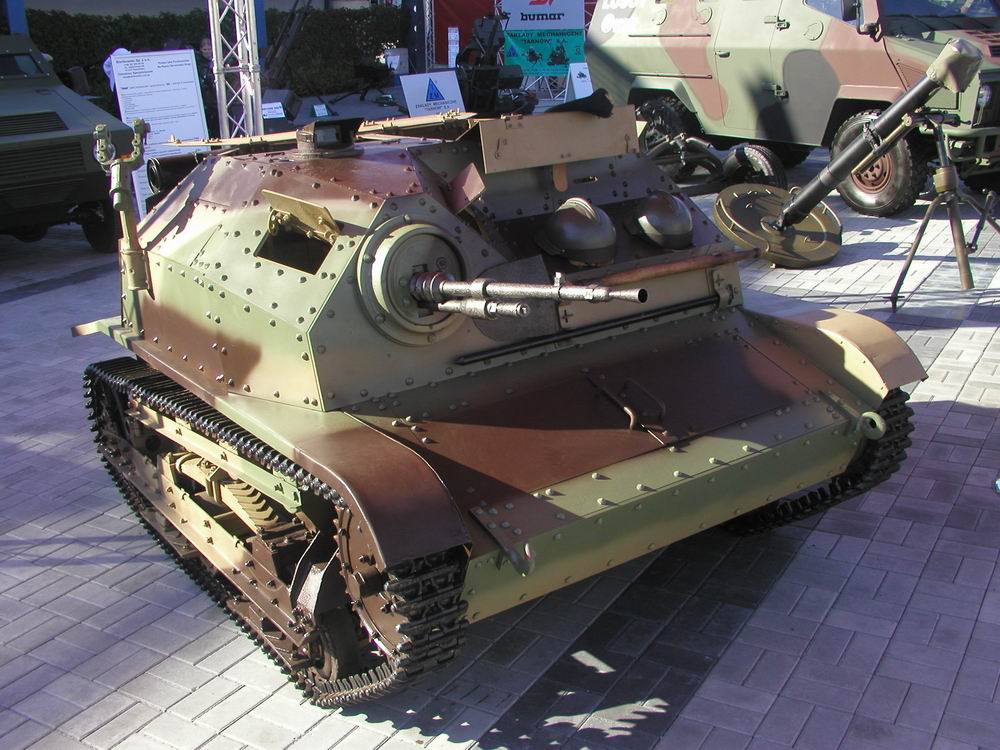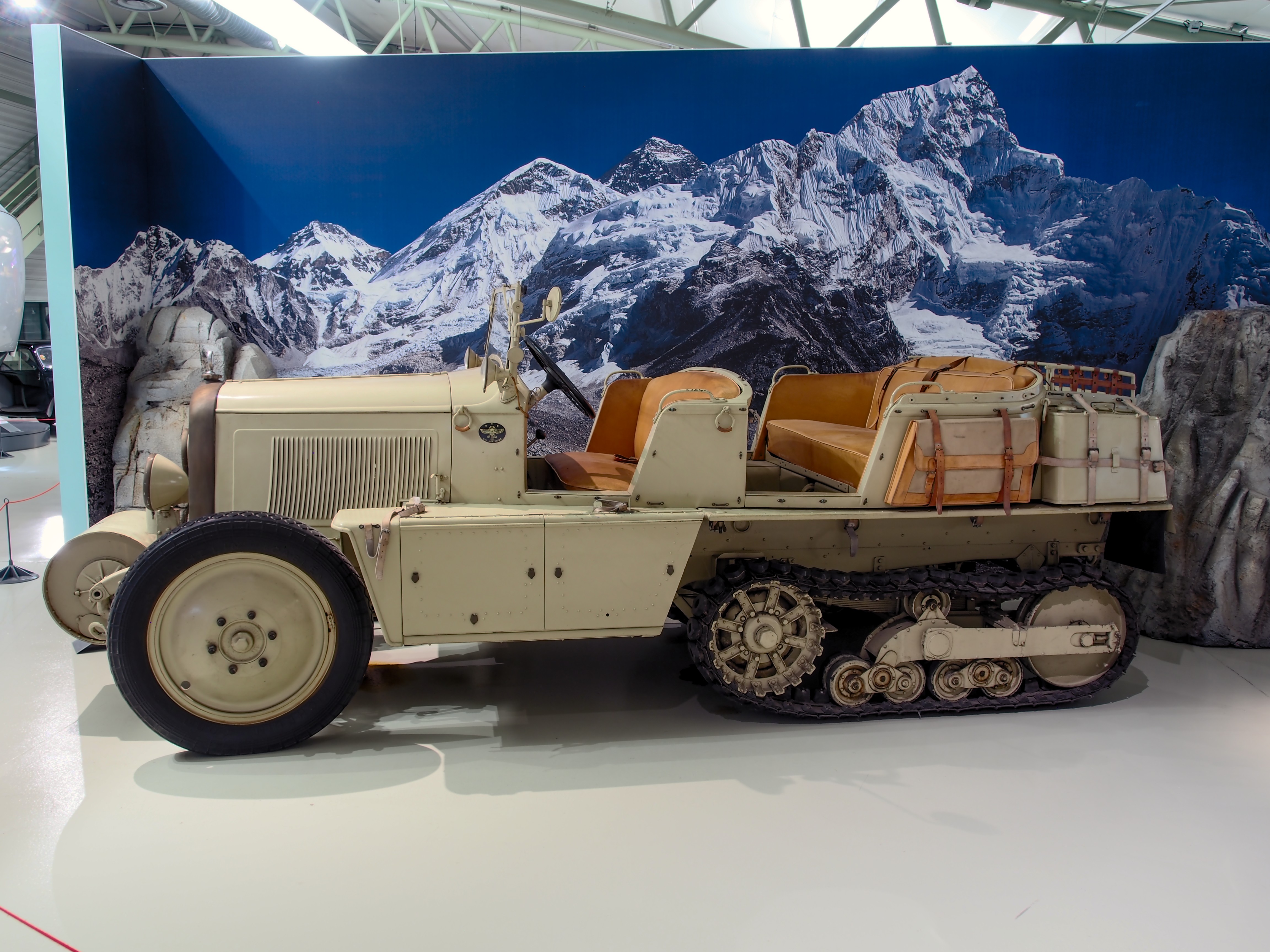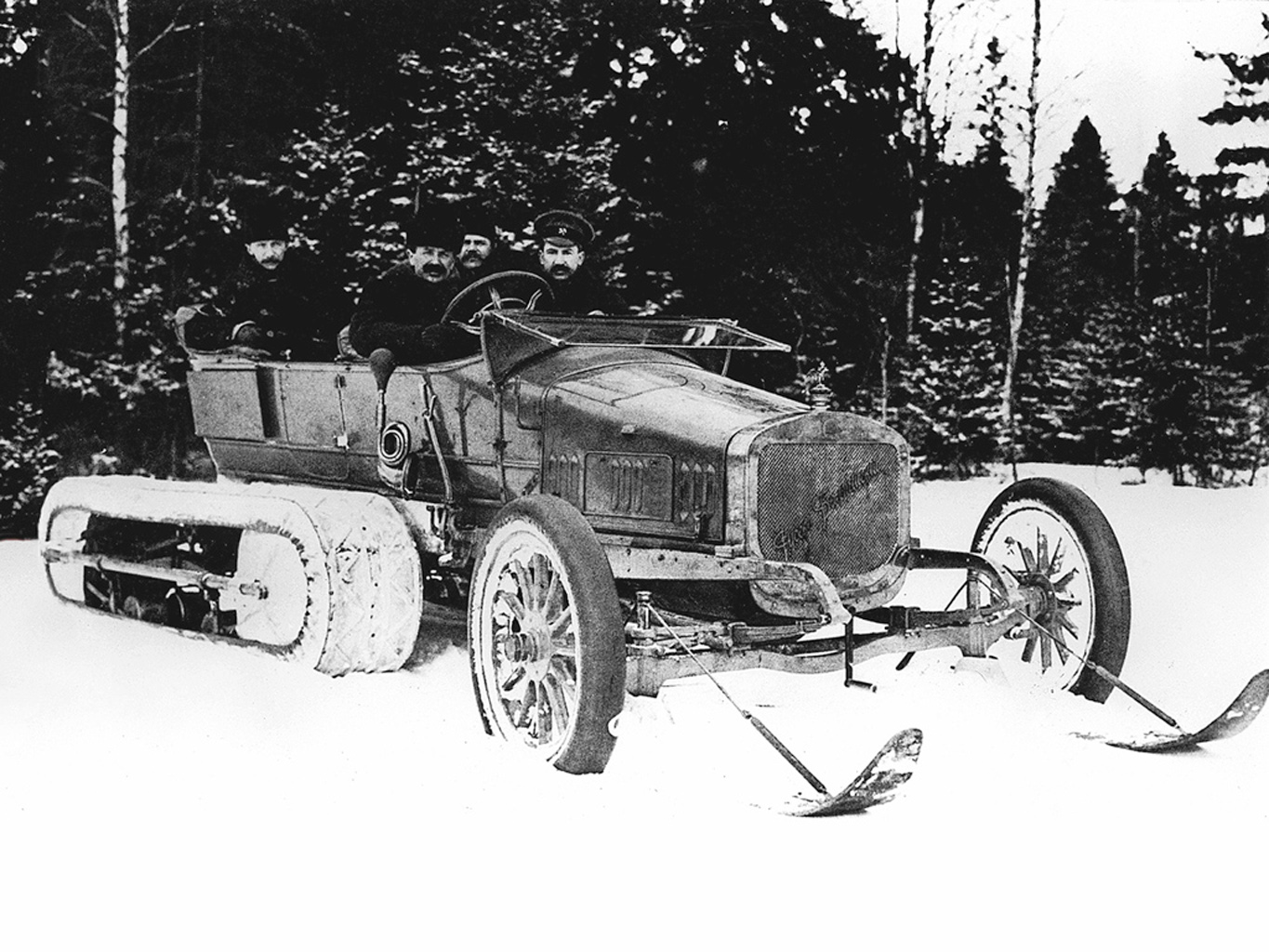|
DAF M39
The ''Pantserwagen'' M39 or DAF ''Pantrado'' 3 was a Dutch 6×4 armoured car produced in the late thirties for the Royal Dutch Army. From 1935 the DAF automobile company designed several armoured fighting vehicles based on its innovative '' Trado'' truck suspension system. Among these was the ''Pantrado 2'', an armoured car. From 1936 the Dutch military encouraged DAF to develop this type into the ''Pantrado 3'', a design more closely meeting army specifications for a reconnaissance vehicle, in order to establish a small indigenous armoured vehicle production capacity. A prototype was built and in early 1939 twelve vehicles were ordered of the DAF M39 type, the last of which was delivered in January 1940. The vehicles were destined to equip reconnaissance platoons of four cavalry hussar regiments. For its time the DAF M39 was a modern design with an all-welded monocoque construction of the hull and extensive use of sloped armour. The turret, fitted with a relatively powerful 37& ... [...More Info...] [...Related Items...] OR: [Wikipedia] [Google] [Baidu] |
Netherlands
) , anthem = ( en, "William of Nassau") , image_map = , map_caption = , subdivision_type = Sovereign state , subdivision_name = Kingdom of the Netherlands , established_title = Before independence , established_date = Spanish Netherlands , established_title2 = Act of Abjuration , established_date2 = 26 July 1581 , established_title3 = Peace of Münster , established_date3 = 30 January 1648 , established_title4 = Kingdom established , established_date4 = 16 March 1815 , established_title5 = Liberation Day (Netherlands), Liberation Day , established_date5 = 5 May 1945 , established_title6 = Charter for the Kingdom of the Netherlands, Kingdom Charter , established_date6 = 15 December 1954 , established_title7 = Dissolution of the Netherlands Antilles, Caribbean reorganisation , established_date7 = 10 October 2010 , official_languages = Dutch language, Dutch , languages_type = Regional languages , languages_sub = yes , languages = , languages2_type = Reco ... [...More Info...] [...Related Items...] OR: [Wikipedia] [Google] [Baidu] |
AB Landsverk
Landsverk (AB Landsverk) was a Swedish heavy industry company, manufacturing military equipment such as tanks, tank destroyers, SPAAGs, armored cars, tracked and wheeled off-road vehicles among others and civilian equipment such as railroad cars, harbour cranes and agricultural machinery. It was founded in 1872 as ''Firman Petterson & Ohlsen''. It was located in Landskrona, Sweden. Early days In late 1920 the company found itself on the verge of bankruptcy. Through a German company, the German ''Gutehoffnungshütte Aktienverein für Bergbau und Hüttenbereich Oberhausen'' (GHH), invested heavily and gained control of 50% of the shares. In 1923 the company manufactured a small number of tracked agricultural tractors based on an American design. The Germans increased their ownership to 61% in 1925, three years later the name was changed to ''AB Landsverk''. In 1929 the German engineer Otto Merker was assigned to Landsverk to develop armoured vehicles, a few prototypes of a Germa ... [...More Info...] [...Related Items...] OR: [Wikipedia] [Google] [Baidu] |
Tankette
A tankette is a tracked armoured fighting vehicle that resembles a small tank, roughly the size of a car. It is mainly intended for light infantry support and scouting.T-27 Tankette (from the 'battlefield.ru' website, with further references cited. Accessed 2008-02-21.) Colloquially it may also simply mean a small tank. Several countries built tankettes between the 1920s and 1940s, and some saw limited combat in the early phases of . The vulnerability of their light armour, however, eventually led armies to abandon the concept with some exceptions such as the more modern German Wiesel (Weasel) series. ...
|
Hendrik Colijn
Hendrikus "Hendrik" Colijn (22 June 1869 – 18 September 1944) was a Dutch politician of the Anti-Revolutionary Party (ARP; now defunct and merged into the Christian Democratic Appeal or CDA). He served as Prime Minister of the Netherlands from 4 August 1925 until 8 March 1926, and from 26 May 1933 until 10 August 1939. Early life He was born on 22 June 1869 in the Haarlemmermeer to Antonie Colijn and Anna Verkuijl, who had migrated to the newly created Haarlemmermeer polder from the Land of Heusden and Altena for religious reasons. He was the first of six children, all born in Haarlemmermeer. Colijn grew up in the Land of Altena. Military service At the age of 16, he went to a military academy in Kampen for officer training, where he graduated as a 2nd lieutenant in 1892. On 18 September 1893, he married Helena Groenenberg (23 September 1867 – 14 February 1947) and was sent to the Dutch East Indies. During his 16 years in the Dutch East Indies, he spent ten years in the Col ... [...More Info...] [...Related Items...] OR: [Wikipedia] [Google] [Baidu] |
Ergonomics
Human factors and ergonomics (commonly referred to as human factors) is the application of psychological and physiological principles to the engineering and design of products, processes, and systems. Four primary goals of human factors learning are to reduce human error, increase productivity, and enhance safety, system availability, and comfort with a specific focus on the interaction between the human and the engineered system. The field is a combination of numerous disciplines, such as psychology, sociology, engineering, biomechanics, industrial design, physiology, anthropometry, interaction design, visual design, user experience, and user interface design. Human factors research employs methods and approaches from these and other knowledge disciplines to study human behavior and generate data relevant to the four primary goals above. In studying and sharing learning on the design of equipment, devices, and processes that fit the human body and its cognitive abilities, t ... [...More Info...] [...Related Items...] OR: [Wikipedia] [Google] [Baidu] |
Half-track
A half-track is a civilian or military vehicle with regular wheels at the front for steering and continuous tracks at the back to propel the vehicle and carry most of the load. The purpose of this combination is to produce a vehicle with the cross-country capabilities of a tank and the handling of a wheeled vehicle. Performance The main advantage of half-tracks over wheeled vehicles is that the tracks reduce the pressure on any given area of the ground by spreading the vehicle's weight over a larger area, which gives it greater mobility over soft terrain like mud and snow, while they do not require the complex steering mechanisms of fully tracked vehicles, relying instead on their front wheels to direct the vehicle, augmented in some cases by track braking controlled by the steering wheel. It is not difficult for someone who can drive a car to drive a half-track, which is a great advantage over fully tracked vehicles, which require specialized training. Half-tracks thus facil ... [...More Info...] [...Related Items...] OR: [Wikipedia] [Google] [Baidu] |
Kégresse Track
A Kégresse track is a kind of rubber or canvas continuous track which uses a flexible belt rather than interlocking metal segments. It can be fitted to a conventional car or truck to turn it into a half-track, suitable for use over rough or soft ground. Conventional front wheels and steering are used, although skis may also be fitted. A snowmobile is a smaller ski-only type. Technology The Kégresse propulsion and suspension system incorporates an articulated bogie, fitted to the rear of the vehicle with a large drive wheel at one end, a large unpowered idler wheel at the other, and several small guide wheels in between, over which run a reinforced flexible belt. The belt is fitted with metal or rubber treads to grip the ground. It differs from conventional track systems by using a flexible belt rather than interlocking metal segments. Use in Russia The name comes from the system's inventor Adolphe Kégresse, who designed the original while working for Tsar Nicholas II of Russi ... [...More Info...] [...Related Items...] OR: [Wikipedia] [Google] [Baidu] |
Hub Van Doorne
Hubert Jozef ("Hub") van Doorne (1 January 1900 – 23 May 1979) was the founder of Van Doorne's Aanhangwagenfabriek (Trailer factory) and of Van Doorne's Automobielfabriek (vehicle factory) known as DAF Trucks, DAF, together with his brother Willem (Wim) van Doorne. Early years Van Doorne was born in America, Netherlands, America, a confusingly named small town in Limburg (Netherlands), Dutch Limburg, the son of blacksmith Martin van Doorne (1870–1912) by his marriage to Petronella Vervoort (1866–1952). In March 1912 the family moved to Deurne, North Brabant, Deurne where van Doorne's father almost immediately died. Van Doorne was keen to take on his father's business, but was considered too young: instead he became an apprentice in the small Mandiger machine factory of nearby Eindhoven. Early career After the First World War van Doorn was employed as a chauffeur-mechanic by a well known local doctor named :nl: Hendrik Wiegersma, Hendrik Wiegersma. Subsequently, he worked for ... [...More Info...] [...Related Items...] OR: [Wikipedia] [Google] [Baidu] |
Hussar
A hussar ( , ; hu, huszár, pl, husarz, sh, husar / ) was a member of a class of light cavalry, originating in Central Europe during the 15th and 16th centuries. The title and distinctive dress of these horsemen were subsequently widely adopted by light cavalry regiments in European armies in the late 17th and early 18th centuries. By the 19th century, hussars wore jackets decorated with braid and shako or busby hats and they developed a romanticized image of being dashing and adventurous. A small number of modern armies retain the designation of hussars for some armored (tank) units. As well, some modern armies have ceremonial mounted units which wear historical hussar uniforms on parades or to provide a VIP escort to national leaders. Historically, the term derives from the cavalry of late medieval Hungary, under Matthias Corvinus, with mainly Serb warriors. Etymology Etymologists are divided over the derivation of the word ''hussar''. Several alternative theorie ... [...More Info...] [...Related Items...] OR: [Wikipedia] [Google] [Baidu] |
Landsverk L180, L181 And L182
The Landsverk L-180, L-181 and L-182 are a family of Armored car (military), armored cars developed by the Swedish company AB Landsverk during the interwar years. They had a good international reputation for being fast, robust and reliable and were acquired in small numbers by Denmark, Estonia, Ireland and the Netherlands, among others. Design The different variants were similarly configured, but were built on different chassis; Büssing, Büssing-NAG, Mercedes-Benz and Daimler-Benz truck chassis. (See ''Operators'') Armament These vehicles were also similarly armed, most commonly with a Bofors 37 mm or Madsen 20 mm anti-aircraft cannon, 20 mm Madsen autocannon but was also manufactured with other similar guns. The only exception, Finland, bought one L-182 and armed it with a 13.2 mm L-35/36 machine gun. (See ''Operators'') Engine In the same way, as several different chassis were used, different engines were also used, and where the make of the engine is known, they w ... [...More Info...] [...Related Items...] OR: [Wikipedia] [Google] [Baidu] |
Izaak H
Izak is a given name. Izak may also refer to: * Izak catshark, a type of cat shark * Izak, a character in Suikoden IV * Piotr "Izak" Skowyrski, Polish esports commentator and streamer * Vian Izak, American singer/songwriter, producer, and audio engineer See also * Izakaya, a Japanese drinking establishment * ''Izakaya Chōji'', a Japanese film * Izaskun Aramburu, a Spanish canoer * Isak (surname) * Itzig family, German-Jewish family * Itzig, Luxembourg, a town * Itz, river in Germany * Izaak Walton League, environmental organization * Izaak-Walton-Killam Award, awarded to Canadian researchers * Izaak Synagogue, in Kraków, Poland * Isakhel, a town in Pakistan * Isakhel Tehsil, area in Pakistan * Izsák (Hungary), a town in Hungary * Izsak (crater) Izsak is a small Lunar craters, lunar impact crater that is located on the Moon's Far side (Moon), far side, hidden from view from the Earth. It lies about half-way between the walled plains Fermi (crater), Fermi to the northeast a ... [...More Info...] [...Related Items...] OR: [Wikipedia] [Google] [Baidu] |
Belgium
Belgium, ; french: Belgique ; german: Belgien officially the Kingdom of Belgium, is a country in Northwestern Europe. The country is bordered by the Netherlands to the north, Germany to the east, Luxembourg to the southeast, France to the southwest, and the North Sea to the northwest. It covers an area of and has a population of more than 11.5 million, making it the 22nd most densely populated country in the world and the 6th most densely populated country in Europe, with a density of . Belgium is part of an area known as the Low Countries, historically a somewhat larger region than the Benelux group of states, as it also included parts of northern France. The capital and largest city is Brussels; other major cities are Antwerp, Ghent, Charleroi, Liège, Bruges, Namur, and Leuven. Belgium is a sovereign state and a federal constitutional monarchy with a parliamentary system. Its institutional organization is complex and is structured on both regional ... [...More Info...] [...Related Items...] OR: [Wikipedia] [Google] [Baidu] |





.jpg)

